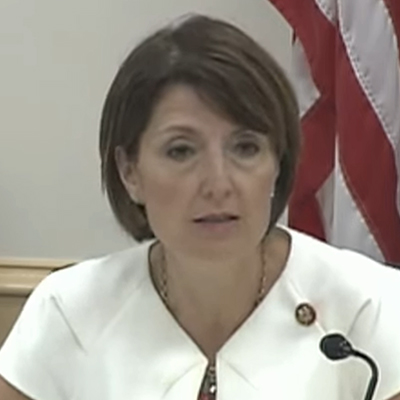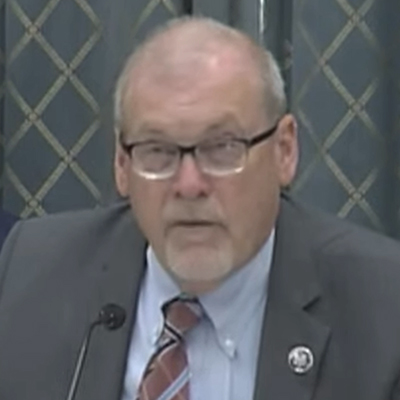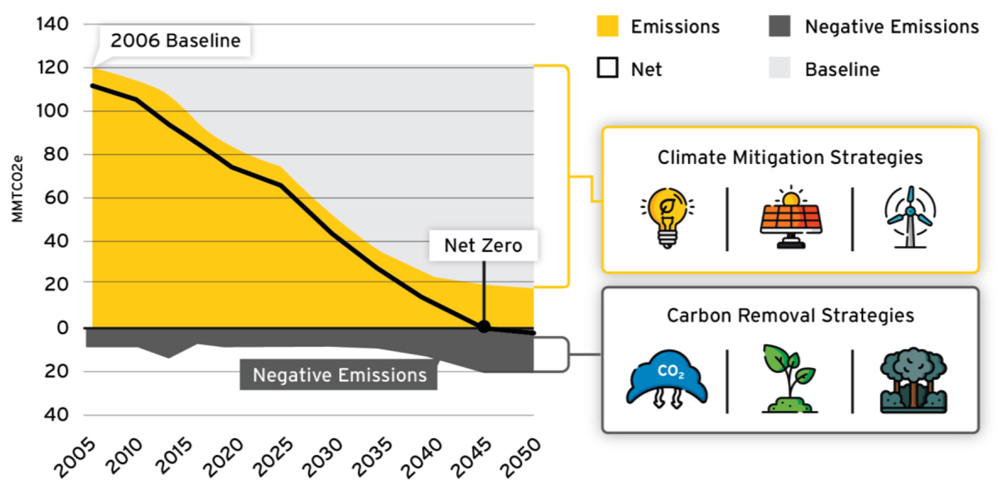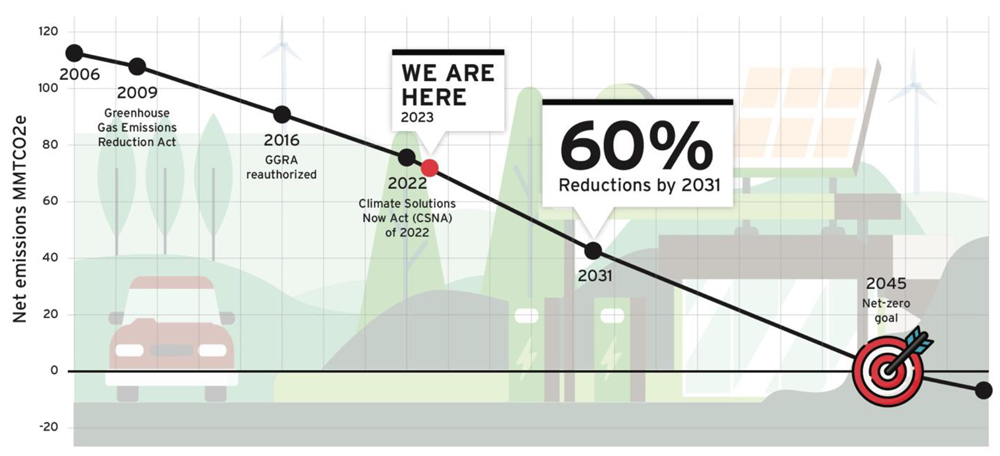Critics of Washington’s cap-and-trade system are blaming the six-month-old program for leaving the state with the highest gasoline prices in the nation.
But cap-and-trade defenders urge caution in drawing that conclusion, saying there are multiple reasons Washington drivers are paying so much at the pump.
What’s not up for debate is that Washington’s gas prices currently far exceed those in the rest of the country and outpace other pricey Western states. American Automobile Association figures show U.S. gas prices averaged $3.54/gallon on July 11, while stations in Washington averaged $4.959. Rounding out the top four markets were California ($4.882), Hawaii ($4.702) and Oregon ($4.615), typically among the most expensive for gas.
AAA data from a year ago showed Washington sixth in the nation at $5.36, well below No. 1 California ($6.088) but still above the national average of $4.81.
Washington’s high gasoline prices coincide with unexpectedly steep prices for carbon allowances in the state’s most recent cap-and-trade auction in May. The auction administered by the Department of Ecology cleared all 8.585 million vintage 2023 allowances on offer at a settlement price of $56.10, compared with $48.50 for first auction in February.
The clearing price exceeded the $51.90 soft cap that triggers use of the program’s Allowance Price Containment Reserve (APCR), a mechanism designed to rein in market impacts when allowance prices reach a level considered overly burdensome for emitters. (See Wash. Cap-and-Trade Prices Break Soft Cap.)
‘Not in the Realm of Possibility’
Todd Myers, environmental director for the Washington Policy Center, a Seattle-based conservative think tank, acknowledges that many factors affect fluctuating gasoline prices. However, he pins current costs on the cap-and-trade program.
“The question is why Washington is the most expensive in the United States. Why are Washington’s prices going up faster than everyone else?” Myers asked.
Myers cited the calculation that a gallon of gasoline produces 1/100th of a metric ton of pollution. With auction prices hovering around $50 per metric ton, that translates into a 50-cent increase per gallon if all the costs are passed on to drivers, he said.
Yoram Bauman, a liberal economist based in Salt Lake City, agrees with Myers’ calculations. In 2016, Bauman helped lead the failed effort to pass Washington’s Initiative 732, a ballot measure that called for creation of a cap-and-trade program coupled with a 1% drop in the state’s sales tax to offset increased fuel costs. Voters rejected I-732 by 18%.
Bauman said I-732 advocates expected cap-and-trade costs to be passed on to customers at the pump. “The idea that the oil companies are gonna suck it up is not in the realm of possibility,” he said.
Oil major Chevron also agrees that cap-and-trade is what is driving Washington prices. In an email to NetZero Insider, the company said “recent carbon cap-and-trade compliance costs raise gasoline prices by about 10% in the state. … The Washington program is designed to force rapid cuts to carbon intensity in a way that requires consumers to pay higher gasoline prices.”
But disputing that link is the office of Gov. Jay Inslee, a strong supporter of cap-and-trade. In an email, Inslee spokesperson Jaime Smith wrote that gas prices “fluctuate widely due to a variety of factors,” noting that geopolitical events have increased the price of crude oil and pointing out that AAA has said maintenance work at Washington refineries has been a “significant factor” for the region’s prices.
“In May, prices rose more quickly in Oregon than in [Washington]. Despite that, gas prices in Washington are currently about 55 cents a gallon less than they were a year ago,” Smith wrote. “While critics of our climate policy will try to pin any and all price increase on the [2021’s Climate Change Act], they conveniently ignore that fossil fuel suppliers have always had some of their highest profit margins in the Northwest. Recent numbers from the industry indicate their profit margin in Washington ranges between 60 [and] 80 cents per gallon.”
Washington and California have the only full-fledged cap-and-trade programs in the nation. Washington has made noises about possibly joining the Western Climate Initiative, which includes both California and the Canadian province of Quebec.
Relief in Sight?
Meanwhile, possible measures to address the high prices have begun to surface in Washington.
“There are many things that can be done. I don’t think the governor or the supporters want to do anything, however,” Myers wrote in a follow-up email. “The higher the price of the allowances and the larger the impact on gas prices, the more money that goes into the state coffers. Plus, as much as the governor plays dumb, he knows the high allowance prices increase gas prices and he wants that because he wants to push people into [electric vehicles].”
“It’s important to note that with only two auctions complete, it is too soon to accurately assess the policy’s price impacts,” Smith said.
Smith also noted that Washington’s program is designed to eventually link with California’s, which would provide auction participants access to a larger marketplace, trimming allowance prices.
And in light of the high allowance prices, the Department of Ecology will hold the APCR auction Aug. 9, potentially relieving some of the pressure on fuel suppliers.
On July 5, state Sen. Chris Gildon (R) sent the Ecology Department a note asking it to take action on its own before the next legislative session.
He wants the department to slow the pace of reducing state emissions and is asking for more allowances to be offered in the quarterly auctions to help prevent bidding wars.
Gildon also asked the agency to give itself the power to temporarily suspend the cap-and trade program when needed. He wants more emphasis on giving farmers a break on gasoline prices, and he seeks no-cost allowances for state industries competing with foreign companies that don’t have caps on their carbon emissions.
Ecology already is meeting with agriculture stakeholders to come up with a formal proposal to help farmers by September.
Near the end of the 2023 legislative session, state Sens. Mark Mullet (D) and Joe Nguyen (D) introduced a bill that would require the state to set up a remittance program for farm fuel users and freight haulers of agricultural products.
Under Senate Bill 5766, covered users would submit receipts every quarter showing the purchases for fuel used for farming and transporting agricultural products. For each gallon of fuel consumed, the user would be eligible for a remittance equal to the price of a ton of carbon at the most recent state emissions auction, multiplied by 0.8%.
The bill appeared too late for a full vote last spring but will be in the hopper when the 2024 session begins.
“When we passed the [cap-and-trade law], we made a promise to Washington’s farmers to protect them from additional costs that could potentially be passed on from the bill. We need to keep that promise,” Mullet said in an April press release. “We hoped this was going to be addressed in implementation, but we heard clearly in budget hearings that this issue still needs to be addressed. This bill is a small, reasonable step that keeps our promise to our farmers.”
Meanwhile, foreign competition to Washington’s smokestack industries — one of Gildon’s concerns — has been on the state government’s radar for years. This category of “energy-intensive, trade-exposed” (EITE) industries are responsible for roughly 10% of the state’s carbon emissions. EITE industries in Washington include petroleum refiners, manufacturers in the metals, paper, aerospace, wood products, chemicals, computer and electronics sectors, and food processors and cement producers.
In 2022, Rep. Joe Fitzgibbon (D) introduced House Bill 1682 to help EITE industries compete with foreign counterparts who would not have to deal with Washington’s stricter carbon emissions standards. The bill would have slowed down how quickly EITE industries would be required to comply with the state’s increasingly stricter emissions standards.
Fitzgibbon’s bill would have ordered EITE plants to submit 2015-2019 data to the state in 2022, setting a baseline for future calculations. Then, in 2023, each EITE plant would have received a free allowance of permitted emissions equal to the baseline set in 2022. The free allowance would then drop to 97% of a plant’s baseline in 2027, to 94% in 2031 and to 88% in 2035. After 2035, the free allowances would decrease 6% annually from the preceding year.
The bill also would have allowed a facility to request an increase in its allowance if it could prove it was using the best available pollution-fighting technologies.
But EITE industries opposed the bill, arguing they did not have the technologies to deal with emissions on the state’s timetable. The Western States Petroleum Association originally opposed the bill, but eventually switched to neutral with concerns on a revised version. BP America West Coast supported the bill from the beginning. In a 2022 interview, Fitzgibbon said opposition from the EITE industries and their supporters killed the bill behind the scenes.
For Myers, one problem to be addressed is that oil companies are limited in the percentage of allowances they buy per auction, leaving them at the mercy of speculators who also buy the credits to sell later at higher prices. He also called for measures to encourage lower final auction prices, which would translate to decreases in gas prices.
To Bauman, the I-732 approach still holds a key for the success of the current cap-and-trade program. High gas prices provide an incentive to shift away from fossil fuels, which is a key component in combating climate change, he said.
“The best option is to balance the price increase on fossil fuels by reducing taxes elsewhere. This is what we tried to do with I-732: offset the impacts of a carbon tax with a reduction in the state sales tax and other tax cuts that would have put money back into people’s pockets,” he said.



